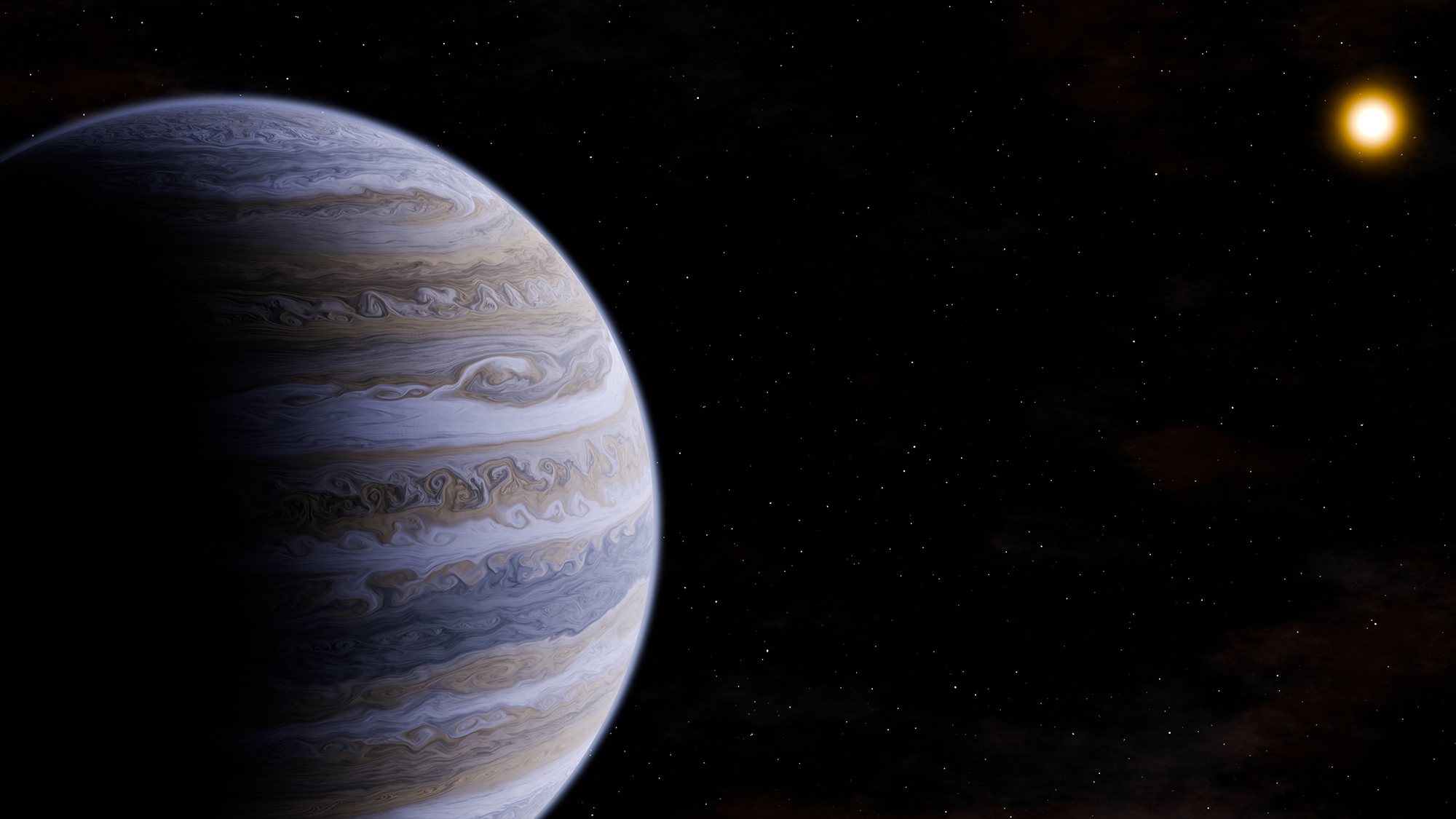

In a new study published July 24 in Nature, a 19-member team of scientists from around the world report the discovery of a new supergiant exoplanet orbiting the star Eps Ind A. The planet—named Eps Ind Ab—was observed with the James Webb Space Telescope (JWST), and is at least six times the mass of Jupiter. With a temperature of around -280 degrees Kelvin, Eps Ind Ab is the coldest exoplanet ever to be imaged directly.
According to study co-author and postdoctoral researcher Elisabeth Matthews from the Max Planck Institute for Astronomy, cold supergiant planets like Eps Ind Ab are difficult to find because of their dimness and much of the light that they emit falls into the mid-infrared part of the electromagnetic spectrum. The mid-infrared is difficult to study from Earth, making the JWST–and its telescopes and cameras that study exactly this part of the EM spectrum–crucial to the discovery.
“Until JWST,” Matthews says, “We didn’t have a telescope … big enough to spatially separate the planet and the star, and also sensitive enough at the mid-infrared wavelengths.”
The existence of a giant planet orbiting Eps Ind A was first inferred in 2019 and further predictions about its properties were made in two papers published in February and July of 2023. However, when the team studied the data from the JWST, they found a planet very different to the one they expected.

Eps Ind A was significantly larger and further from its star than scientists previously thought. However, it also presented other mysteries. The planet is extremely bright in the mid-infrared wavelengths at which JWST examined it. So much so that, as Matthews says, “We were surprised to find [it] hadn’t previously been detected from the ground.” Most models predict that a planet as bright as Eps Ind Ab in these wavelengths would also be bright in other wavelengths—specifically one wavelength at which the Eps Ind A system had already been studied in detail.
Those observations didn’t detect Eps Ind Ab, suggesting that it is not in fact bright in the 4µm wavelength. The team speculates that this could be because the planet’s atmosphere is rich in compounds that absorb light in the 4µm range. Matthews believes carbon monoxide and carbon dioxide, along with methane, could be key contributors to their model. If this theory is correct, it would mean that the planet was unexpectedly rich in such compounds—which, in turn, would raise further questions about how the planet formed.
“It’s a little hard to come up with a model for how the planet formed with so much of these heavier elements,” Matthews says.
However, she cautions that the theory about the presence of these elements needs further data before it can be confirmed. The team is hoping to examine the planet’s atmosphere with the JWST spectroscopic instruments, which would allow direct measurement of the planet’s atmospheric composition.

Eps Ind Ab promises to be the subject of intense study going forward. There are the outstanding questions about the planet itself, namely the composition of its atmosphere and the process of its formation. But there’s also the fact that it provides an opportunity to make direct observations of a relatively rare class of exoplanet, making it an excellent source of real-world data against which scientists can test their theoretical models.
“Most of the time in astronomy, we’re only able to measure the brightness of stars, brown dwarfs, and planets,” explains Matthews. “We often want to be able to infer the masses of those objects, based on their brightness.”
To do this, scientists develop models to relate brightness and mass. These models simulate the formation and evolution of these objects, and Eps Ind Ab provided scientists with a first chance to test the model of thermal evolution at a low temperature range. As the paper notes, the results were encouraging: “The best-fit temperature of the planet is consistent with theoretical thermal evolution models.”
Finally, Eps Ind Ab and its parent star are gravitationally bound to what the team describes as a “widely-separated brown dwarf binary” system. Matthews says that both the brown dwarfs likely formed from the same material, and at the same time, as Eps Ind Ab and its parent star. Knowing that all four objects most likely share an origin, she says, makes the study of the two systems “really valuable for testing formation and evolution models.”
The JWST promises to provide more information in this area, too, with observations of the brown dwarves scheduled to allow the team to compare their atmospheric chemistry with that of Eps Ind Ab.
